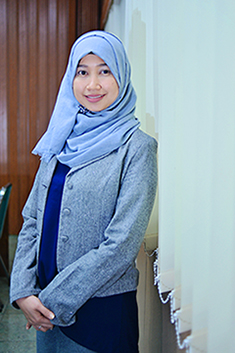Uji Kandungan Fenolik Total dan Pengaruhnya terhadap Aktivitas Antioksidan dari Berbagai Bentuk Sediaan Sarang Semut (Myrmecodia pendens)
Downloads
Apriyanti, E. A., Satari, M. H. & Laksono, B. (2016). Perbedaan Potensi Antibakteri Ekstrak Metanol Umbi Sarang Semut (Myrmecodia pendens Merr. & Perry) dan NaOCl terhadap Streptococcus mutans (ATCC 25175). Jurnal Kedokteran Gigi Universitas Padjajaran; 28; 106-112.
Attamimi, F. A., Ruslami, R. & Maskoen, A. M. (2017). Uji Aktivitas Antibakteri Ekstrak Kasar Umbi Sarang Semut (Myrmecodia pendens) dibanding dengan Klorheksidin terhadap Streptococcus sanguinis. Majalah Kedokteran Bandung; 9; 94-101.
Dewi, Y. S. K. & Dominika. (2008). Aktivitas Antioksidasi Ekstrak Fenol Umbi Sarang Semut (Hydnophytum sp.) pada Berbagai Suhu Penyeduhan. Agritech; 28; 91-96.
Dhurhania, C. E. & Purwanti. (2015). The Effect of The Way to Use Sarang Semut (Myrmecodia pendens) in Cancer Treatment against Antioxidant Activity, Tocopherol Content, and Total Flavonoids. Prosiding; Aptisi Komisariat II, Surakarta.
Fatmawati, D., Puspitasari, P. K. & Yusuf, I. (2011). Efek Sitotoksik Ekstrak Etanol Sarang Semut (Myrmecodia pendens) pada Sel Line Kanker Serviks Hela. Sains Medika; 3; 112-120.
Kurniawati, E. & Sianturi, C. Y. (2016). Manfaat Sarang Semut (Myrmecodia pendens) sebagai Terapi Antidiabetes. Majority; 5; 38-42.
Lung, J. K. S. & Destiani, D. K. (2017). Uji Aktivitas Antioksidan Vitamin A, C, E dengan metode DPPH. Farmaka; 15; 53-62.
Noya, E., Buang, Y. & Cunha, T. D. (2013). Isolasi, Identifikasi, dan Uji Aktivitas Senyawa Antioksidan Fraksi Kloroform Ekstrak Metanol Sarang Semut (Myrmecodia pendens). Jurnal Kimia Terapan; 1; 6-11.
Nugroho, A. E., Malik, A. & Pramono, S. (2013). Total Phenolic and Flavonoid Contents of and in vitro Antihypertension Activity of Puriffied Extract of Indonesian Cashew Leaves (Anacardium occidentale L.). International Food Research Journal; 20; 299-305.
Sabri, S. (2011). Aktivitas Antioksidan dan Komponen Bioaktif Kangkung Air (Iponemoea aquatica Forsk). Skripsi; Fakultas Perikanan dan Ilmu Kelautan Institut Pertanian Bogor, Bogor.
Setianingsih, N. (2013). Potensi Antioksidan Ekstrak Sarang Semut (Myrmecodia pendens): Pengaruh Bentuk Sarang Semut, Suhu Ekstraksi, Konsentrasi terhadap Aktivitas Antioksidan. Thesis; Fakultas Ilmu dan Teknologi Pangan Universitas Jenderal Soedirman, Purwokerto.
Soeksmanto, A., Subroto, M. A., Wijaya, H. & Simanjuntak, P. (2010). Anticancer Activity Test for Extracts of Sarang Semut Plant (Myrmecodia pendens) to Hela and MCM-B2 cells. Pakistan Journal of Biological Science; 13; 148-151.
Suharyanto, Wahyudi, D. & Lindawati, N. Y. (2013). Metode Ekstraksi Sarang Semut (Myrmecodia Pendens) dengan Teknik Maserasi untuk Menghasilkan Obat Alternatif Kanker Paru. Lembaga Penelitian dan Pengabdian kepada Masyarakat. Prosiding; Semnas Sains & Entrepreneurship I, Semarang.
Raya, M. K., Legowo, A. M. & Wijayahadi, N. (2016). Efektivitas Ekstrak Umbi Sarang Semut sebagai Penurun Kadar Glukosa Darah Tikus Sprague dawley yang Diabetes Mellitus. Jurnal Gizi Indonesia; 4; 138-144.
Rosyadi, I. & Hariono, B. (2017). Potensi Imunologi Serbuk Umbi Tanaman Sarang Semut (Myrmecodia tuberose) terhadap Tikus Wistar yang Diinduksi Streptozotocin. Jurnal Sain Veteriner; 35; 159-164.
Yessica, P. (2012). Uji Sitotoksisitas Ekstrak Etanol Sarang Semut (Myrmecodia pendens Merr & Perry) terhadap Carsinoma Mammae pada Kultur Sel MCF-7. Skripsi; Fakultas Kedokteran Universitas Kristen Maranatha, Bandung.
1. The copyright of this journal belongs to the Editorial Board and Journal Manager with the author's knowledge, while the moral right of the publication belong to the author.
2. The formal legal aspect of journal publication accessibility refers to the Creative Commons Attribution-Non-Commercial-Share Alike (CC BY-NC-SA), which implies that the publication can be used for non-commercial purposes in its original form.
3. Every publication (print/electronic) is open access for educational, research, and library purposes. In addition to the objectives mentioned above, the editorial board is not responsible for copyright infringement


.jpg)















